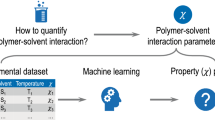Abstract
Formulators of complex mixtures have long known that the characteristics of their final formulation and the position of “equilibrium” often depends critically upon the order of addition of ingredients and the precise processing conditions under which the formulation was made. The large variety of possible outcomes derive from the many eigenstates that are available to each composition of a complex mixture due to the fact that the bonds between the component molecules are weak physical bonds and therefore a potential multitude of nanostructures can be formed. This is especially true of systems comprising polyelectrolytes and oppositely charged surfactants in the semi-dilute regime, because both polyelectrolyte conformation and surfactant micellar association structures are strongly influenced by the ionic environment of the polymer and surfactant molecules. This is especially important for 2-in-1 shampoos that depend upon the spontaneous creation of a polyelectrolyte/surfactant coacervate to deposit active conditioning, styling or antidandruff ingredients during the shampoo process. The investigation of the effects of order of addition requires exanimation of a myriad of samples and it is virtually impossible by conventional techniques. This task is ideally suited to investigation by a combinatorial approach aimed at the generation of libraries of pseudo-phase diagrams. In this study we developed a high-throughput screening method to generate phase diagrams over a large range of concentrations for cationic polysaccharide interaction with anionic surfactant in the presence and absence of dissolved electrolyte. Using a liquid handling system for sample preparation, we are able to analyze nearly 1000 samples per day, making the above goals of understanding electrolyte effects and coacervate structure-property relationships attainable.
Similar content being viewed by others
References
Menger, F. M. ; Seredyuk , V.A. ; Apkarian, R. P.; and Wright, E.R.; J. Amer. Chem. Sa; 124, (42), 12408, 2002
Menger, F. M; Peresypkin, A. V.; J. Amer. Chem Soc., 123 (23), 5614, 2001.
Sokolov, E; Yeh, F.; Khokhlov, A.; Grinberg, V.T.; ; Chu, B.; J. Phys. Chem. B, 102, 7091, (1998).
Zhou, S; Yeh, F.; Burger,C; Chu, B.; J. Phys. Chem. B, 103, 2107, (1999).
Odjik T.; Houwaart, A.C.; J. Polymer Sci, Polymer Physics, 16, 627, (1977).
Stevens, M. J; Plimpton, S J. ; European Physical Journal B Condensed Matter, 2, 341, (1998).
Cohen Stuart M.A.; Besseling, N.A.M.; Fokkink, R.G.; Langmuir, 14, 6846, (1998).
Author information
Authors and Affiliations
Rights and permissions
About this article
Cite this article
Lochhead, R.Y., Huisinga, L.R., Edwards, C. et al. A Combinatorial Investigation of the Effects of Order of Addition in the Interaction of Polyelectrolytes with Surfactants.. MRS Online Proceedings Library 894, 08940326 (2005). https://doi.org/10.1557/PROC-0894-LL03-26
Received:
Accepted:
Published:
DOI: https://doi.org/10.1557/PROC-0894-LL03-26




